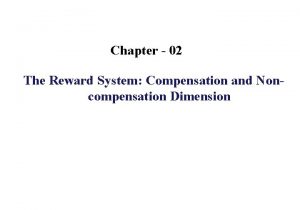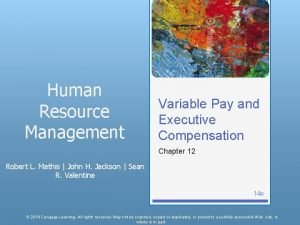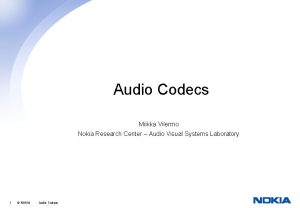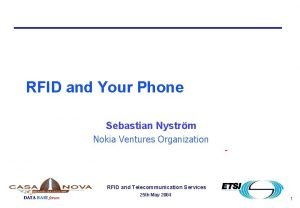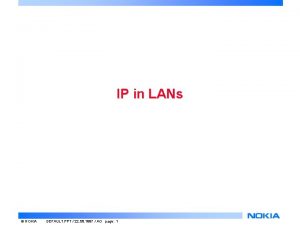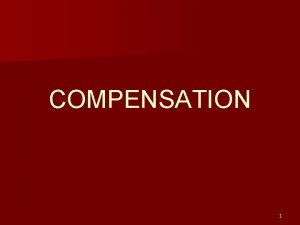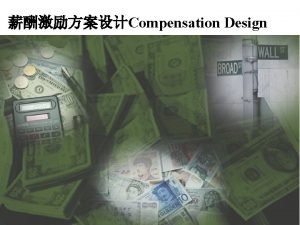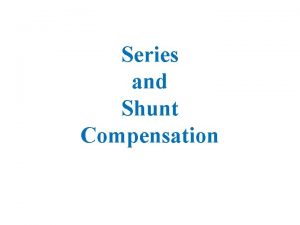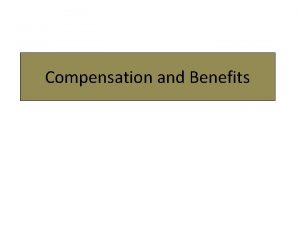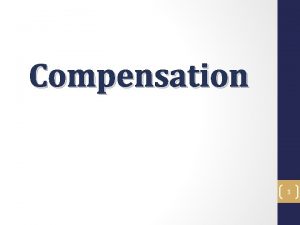Nokia Executive Compensation Nokia on Executive Compensation Nokia
















- Slides: 16

Nokia Executive Compensation

Nokia on Executive Compensation Nokia operates in the extremely competitive, complex and rapidly evolving mobile communications industry. A leading company in the industry and conduct a global business. The key objectives of the executive compensation programs are to attract, retain, and motivate talented executive officers that drive Nokia’s success and industry leadership.

Nokia’s compensation plan meets the expectation of employees and shareholders The executive compensation programs are designed to: » provide competitive base pay rates, » provide a total compensation that is competitive with the relevant market, » attract and retain outstanding executive talent, » deliver significant variable cash compensation for the achievement of stretch goals, and » align the interests of the executive officers with those of the shareholders through long-term incentives in the form of equity-based awards.

Compensation programs evaluates various dimensions of executive performance The compensation of Nokia’s executive officers is based on the following factors: » The compensation levels for similar positions (in terms of scope of position, revenues, number of employees, global responsibility and reporting relationships) in relevant benchmark companies » The performance demonstrated by the executive officer during the last year » The size and impact of the role on Nokia’s overall performance and strategic direction » The internal comparison to the compensation levels of the other executive officers of Nokia, and » Past experience and tenure in role.

Nokia attempts to align interest of various stakeholders EVA Earning Per Share Cash Flow Total Cost Productivity Performance View Shareholder Value Socio Economic Condition External View Internal View Customer Value Employee Value Customer Satisfaction Product Approval Process Relationship, Peer Compensation Associate Satisfaction Performance and Reward, Creativity, Skill

Components of the package • • • Competitive base package Performance shares Stock options Restricted shares Other equity plans for employees • 60% of each executive remuneration is paid in cash and shares are paid by buying from the markets • A portion of the executive compensation is based on the Nokia’s TSR compared to key competitors. • The Performance Share Plan in 2007 – Average Annual Net Sales Growth: performance period 2007 – 2009, and – Reported, basic EPS: 2009 • 0 -12 million Nokia shares

Nokia Share Price (vs. Motorola)

Return Analysis

Incentive as a % of annual base salary and aggregate cash compensatio

Summary compensation table 2006

Departure from stakeholder approach to shareholder approach NOKIA Shareholder Country Philosophy Mgt Goals Performance Measurement Financial condition Accounting Principle Strength Weakness Stakeholder Anglos Saxon Continental Europe, Japan Shareholder ownership Corporate is a Social Entity Maximizing shareholders’ interest Maximizing stakeholders value EV in the market EV, relationship, social contribution Capital market oriented, institutional investors Bank influence, high rate of major shareholders Market price basis (dividends) Cost valuation basis to protect banks, and others (debts) Risk mitigation, mgt efficiency Long-term performance, harmony and stability Short-term performance Low mgt efficiency, light shareholders’ interest

Change in the External Environment • Dependent on internal control mechanism rather than external control in the stock market • Employee participants in the board meeting • No hostile and Limited M&A • American Institutional Investors • Global Management • Development of Capital Market • - Rapidly changing toward Anglo-Saxon Model Abolishment on barrier to foreign ownership in ‘ 93 Global standardization of shareholders' value Outsider System through a strong capital market (institutional investors, M&A) • Increased Capital Efficiency

Introduction of Long Term Incentives in Nokia (Anglos Saxon scheme) Type Example Goals Introduction Cash Scheme Cash Incentive Performance Unit Mid term performance Stock Evaluation Scheme Stock Option SAR (stock appreciation rights) Increase of EV After 2001 Increasing Stock Ownership Scheme Limited Stock Plan Performance Share Phantom Stock (dividends) Alignment bt. Shareholders and CEO New Direction Partially Introduced Conventional Decreasing

Thank you

Equity grants in 2006

Ongoing Stock Option Plans
 Compensation and non compensation dimensions
Compensation and non compensation dimensions Executive compensation in hrm
Executive compensation in hrm What ethical issues surrounding executive compensation
What ethical issues surrounding executive compensation Nokia 5130
Nokia 5130 Nokia keilaniemi
Nokia keilaniemi Nokia research center
Nokia research center Nokia oss bss
Nokia oss bss Sca nokia
Sca nokia Nokia bts alarm list
Nokia bts alarm list Nokia ventures organization
Nokia ventures organization Nokia algorithm world
Nokia algorithm world Nokia pen
Nokia pen Nokia diamond
Nokia diamond Scamper business model
Scamper business model Nokia 1998
Nokia 1998 Nokia ppt
Nokia ppt Lan technologies ppt
Lan technologies ppt
